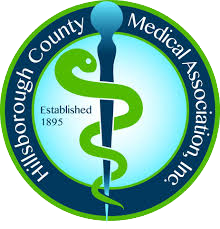When you live an active lifestyle, few things are as discouraging as a knee injury that takes you out of the game. Whether you’re a competitive athlete or someone who simply loves running, hiking, or staying active, a torn meniscus can stop you in your tracks. The meniscus is a small, crescent-shaped piece of cartilage that cushions your knee joint, allowing it to move smoothly and absorb shock. When it tears, it can cause pain, swelling, and limited motion, making even simple movements difficult. While some minor tears may heal with rest and physical therapy, others require surgery to restore full strength and mobility.
Understanding the Meniscus and Why Surgery May Be Needed
Each of your knees has two menisci: one on the inner side (medial) and one on the outer side (lateral). They act as shock absorbers between the thigh bone (femur) and shin bone (tibia). Unfortunately, the meniscus is vulnerable to injury, especially during sports that involve sudden stops, twists, or pivots.
Common causes of meniscus tears include:
- Sudden twisting or turning of the knee during sports like soccer, basketball, or tennis
- Deep squats or heavy lifting that strain the joint
- Degenerative wear and tear from aging or repetitive motion
- Direct trauma, such as a hard hit to the knee
For athletes, a meniscus tear can feel devastating. The swelling, instability, and inability to train can lead to frustration and loss of momentum. But understanding what’s happening inside your body can help you take control of your recovery journey. When the meniscus tears, blood flow to the damaged area is often limited—especially in the inner portion of the cartilage—making it difficult for the tissue to heal on its own. That’s where surgery becomes necessary.
What Happens During Meniscus Surgery
Meniscus surgery is typically performed using knee arthroscopy, a minimally invasive procedure that uses small incisions and a tiny camera to guide the surgeon. Depending on the severity and location of the tear, your surgeon may choose between two main approaches:
- Meniscus Repair: The surgeon stitches the torn pieces of cartilage back together. This is usually preferred for younger, active patients or athletes who want to preserve as much of the natural meniscus as possible.
- Partial Meniscectomy: The surgeon trims away the damaged portion of the meniscus, smoothing the edges so the joint can function properly again.
Both procedures are designed to relieve pain, restore motion, and protect the knee from further damage. Recovery times can vary depending on the type of surgery performed, but with the right care, most patients return to sports and active lifestyles within a few months.
How to Recover Faster After Meniscus Surgery
The recovery process is where your dedication and mindset matter most. Healing takes time, but there are proven ways to speed up recovery and get back to doing what you love.
-
Follow your rehabilitation plan.
Your physical therapist will create a program tailored to your surgery type and activity level. It usually includes exercises to restore strength, balance, and flexibility. Consistency is keyhere. Don’t rush, but don’t skip your sessions either.
-
Protect and support your knee.
Always follow the advice of your medical team as it relates to your specific injury. However, in practice, this generally might look like:
- Using crutches or a brace as directed to avoid putting too much weight on the joint early on.
- Keeping the incision area clean and dry to prevent infection.
- Applying ice and elevating your leg to manage swelling.
-
Focus on nutrition and hydration.
Your body needs fuel to repair tissue. Lean protein, fruits, vegetables, and plenty of water all play vital roles in recovery. Omega-3 fatty acids and vitamin C can also support healing and reduce inflammation.
-
Rest, butstay mentally active.
It’s normal to feel discouraged when sidelined, but recovery isn’t wasted time. In fact, it’s part of your comeback. Use this phase to visualize your goals, stay connected with teammates, and strengthen your mental resilience.
Recovering from meniscus surgery is more than just physical healing. It’s also rebuilding confidence in your knee and your ability to move again. With patience and persistence, most people return stronger than before.
When Meniscus Surgery Is the Right Choice
Not every meniscus tear requires surgery, but when it does, it’s because the injury is too severe to heal on its own. Athletes especially benefit from surgery when pain, swelling, or instability interfere with performance. Ignoring a serious tear can lead to worsening damage and increase the risk of early arthritis.
Choosing surgery can feel like a setback, but in reality, it’s an investment in your long-term mobility and performance. Think of it as pressing pause—not stop—on your athletic journey. With today’s arthroscopic techniques and personalized rehab programs, athletes can recover faster, regain full range of motion, and return to competition stronger and more confident.
You Can Get Back to What You Love
Knee injuries test more than just your physical strength. They also test your patience, determination, and mindset. But every stage of recovery brings progress, even when it doesn’t feel like it. The key is to trust the process, stay consistent with rehab, and listen to your body.
Meniscus surgery isn’t the end of your athletic story—it’s a turning point. It’s the chance to rebuild your foundation, correct what was broken, and come back more mindful of your body’s limits and strengths. Every athlete’s journey includes setbacks, but it’s how you respond that defines your comeback.
So take it one step at a time, literally. With the right care, discipline, and support, you’ll be back doing what you love before you know it. Your body is built to heal, and your determination is the strongest muscle you have.
Are you experiencing knee pain, swelling, or limited movement from a possible meniscus injury? Call (813) 253-2406 or fill out our online form to schedule a consultation with one of our orthopedic specialists. Tampa Orthopaedic & Sports Medicine is located in Tampa, FL, and proudly serves patients from the surrounding communities.












